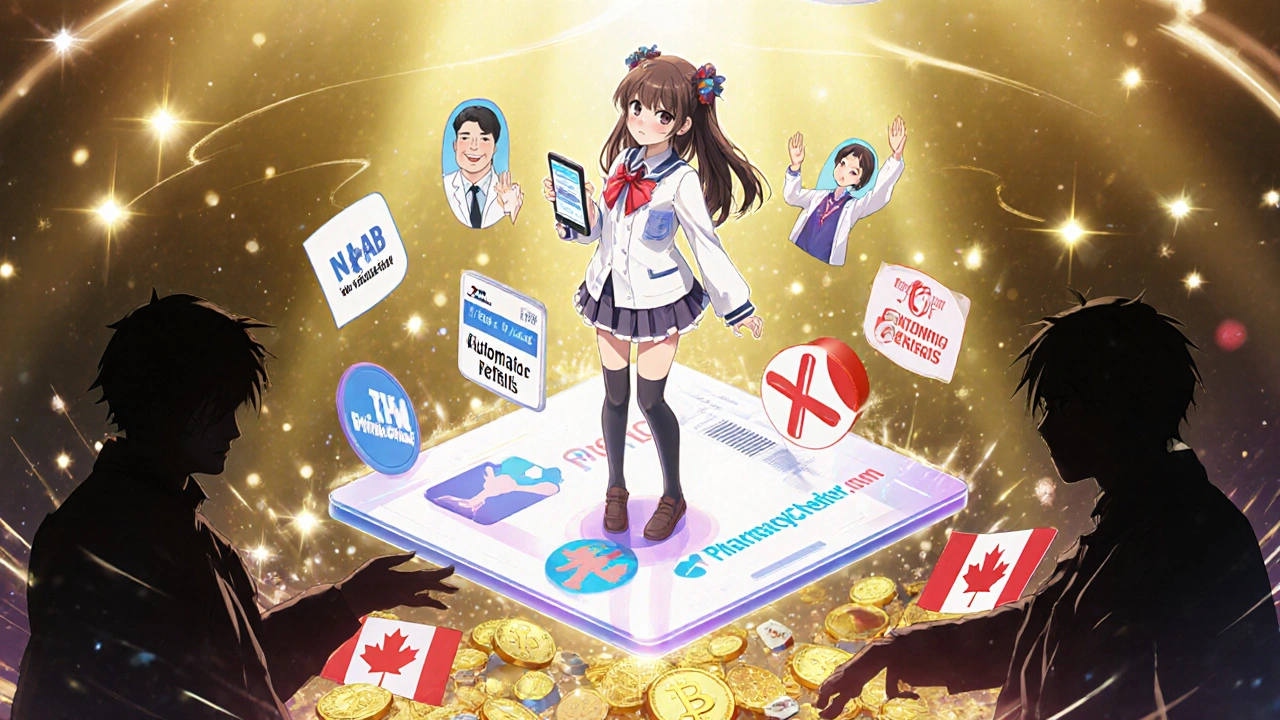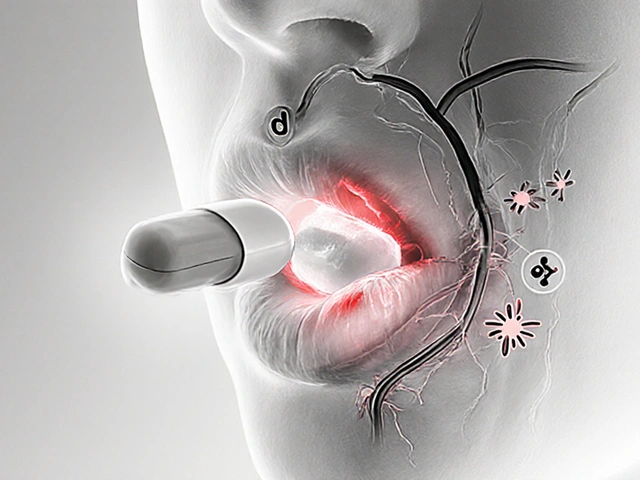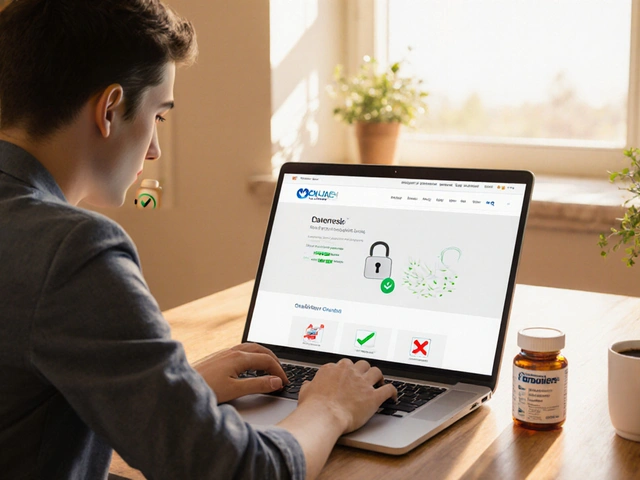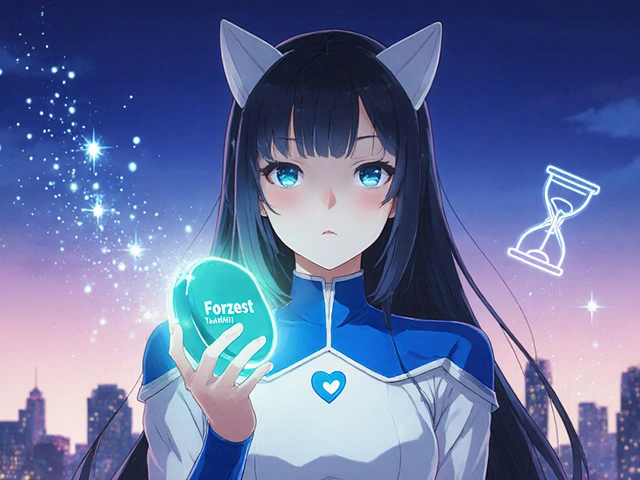Buying medication online sounds convenient-until you realize how many fake pharmacies are out there. In 2023, the FDA estimated that 96% of online pharmacies are illegal. These sites sell counterfeit pills, expired drugs, or worse-medications laced with toxic chemicals. One consumer in 2022 received what was labeled as Viagra, but lab tests found it contained 300% more active ingredient than stated. That’s not a mistake. That’s a health emergency.
But there’s good news: legitimate, licensed online pharmacies exist. They’re regulated, verified, and safe. The trick isn’t avoiding online pharmacies altogether-it’s learning how to spot the real ones.
What Makes an Online Pharmacy Licensed?
A licensed online pharmacy isn’t just a website with a fancy logo. It’s a business that meets strict legal and safety standards. In the U.S., that means being accredited by the Verified Internet Pharmacy Practice Sites (VIPPS) a program run by the National Association of Boards of Pharmacy (NABP) that certifies pharmacies meeting 17 safety and operational standards. These pharmacies must:
- Have a valid physical address in the U.S.
- Be licensed by a state board of pharmacy
- Require a valid prescription from a licensed doctor
- Hire licensed pharmacists who are available to answer questions
- Use secure, encrypted websites (look for "https://" and the padlock icon)
Outside the U.S., countries like Canada and the U.K. have their own licensing systems. But here’s the catch: many websites pretend to be Canadian pharmacies to trick customers. The NAPRA National Association of Pharmacy Regulatory Authorities, which oversees pharmacy regulation in Canada found that 42% of sites claiming Canadian licensing in 2022 were actually operating from other countries. Always verify directly with the provincial pharmacy regulator-not just the website’s claim.
How to Spot a Fake Online Pharmacy
Fake pharmacies are getting smarter. They copy real logos, use professional-looking websites, and even fake customer reviews. But they still make the same mistakes. Here’s what to watch for:
- No prescription required: If you can buy controlled substances like Adderall, Xanax, or Viagra without a prescription, it’s illegal. Legitimate pharmacies always require a valid, up-to-date prescription.
- Too-good-to-be-true prices: If a 30-day supply of Lipitor costs $10, it’s not a deal-it’s a trap. Legitimate pharmacies don’t sell brand-name drugs at 90% off. They may offer generics at lower prices, but not at impossible rates.
- No contact info: Legitimate pharmacies list a physical address, a phone number you can call, and a way to speak with a pharmacist. If you can’t find any of these, walk away.
- Payment in cryptocurrency or wire transfer: Real pharmacies use credit cards, debit cards, or secure platforms like PayPal. They don’t ask for Bitcoin or Western Union.
- Spelling errors or broken links: A professional pharmacy invests in a clean, well-maintained site. If the page looks like it was built in 2008, it probably is.
One common trick? Fake VIPPS seals. The NABP has warned that scammers now copy the VIPPS logo and slap it on fake sites. The only way to know if it’s real? Click it-if it links to the official NABP directory, it’s legit. If it goes nowhere or to a random site, it’s fake.
How to Verify a Pharmacy for Real
Don’t rely on a seal or a slogan. Do the work. Here’s a step-by-step check you can do in under 10 minutes:
- Check for a prescription requirement. If the site lets you buy prescription drugs without one, stop. That’s a hard rule.
- Look for the VIPPS seal. Click it. It should take you to the NABP VIPPS directory. If it doesn’t, it’s fake.
- Use the FDA’s BeSafeRx tool. Go to BeSafeRx and enter the pharmacy’s name or web address. It checks against state pharmacy licensing databases.
- Verify the physical address. Paste the address into Google Maps. If it’s a residential house, a PO box with no storefront, or a building that doesn’t exist, it’s not legitimate.
- Call the pharmacy. Ask to speak to a pharmacist. If they can’t connect you or sound scripted, walk away.
- Check PharmacyChecker.com. This independent site evaluates pharmacies worldwide. Look for their green checkmark. They inspect pharmacies in person, even in countries with weaker oversight.
Pro tip: If you’re buying from a Canadian pharmacy, go to the College of Pharmacists the official regulatory body for pharmacists in each Canadian province website for your province (e.g., Ontario’s CPhO, British Columbia’s CPhBC) and search for the pharmacy by name. Don’t trust the site’s claim-go straight to the source.
What to Do If You’ve Already Bought From a Fake Site
If you’ve ordered from a suspicious site, don’t panic-but don’t ignore it either. Here’s what to do:
- Stop taking the medication. Even if it seems to work, counterfeit drugs can cause organ damage, allergic reactions, or long-term toxicity.
- Save everything. Keep the packaging, receipt, emails, and any communication with the site.
- Report it. File a report with the FDA’s MedWatch program. In 2022, over 1,800 reports came from people who received fake or dangerous drugs from online pharmacies.
- See your doctor. If you took the medication, tell your doctor what you took and where you got it. They may need to run tests.
- Check your bank statement. If you paid with a credit card, dispute the charge. Legitimate pharmacies don’t fight these disputes.
Many people think, "I just took one pill, it’s fine." But one pill from a fake pharmacy can be enough to cause a stroke, liver failure, or death. Don’t gamble with your health.
Why Legitimate Online Pharmacies Are Worth It
Not all online pharmacies are dangerous. In fact, licensed ones offer real benefits:
- Convenience: Refills delivered to your door, especially helpful for people with mobility issues or chronic conditions.
- Cost savings: Many accredited pharmacies offer lower prices on generic medications. A 90-day supply of metformin can cost under $10 through a verified pharmacy.
- Pharmacist support: You can call a licensed pharmacist with questions about side effects, interactions, or dosing-something you rarely get at a big-box store.
- Consistency: No more running out of medication because you forgot to refill. Many offer automatic refills and reminders.
According to Trustpilot data from 2023, VIPPS-accredited pharmacies have an average rating of 4.3 out of 5 based on over 1,200 reviews. The most common praise? "The pharmacist called me to check how I was feeling." That’s the human touch you’re not getting from a shady site.

What’s Changing in 2025
The landscape is evolving. In 2023, PharmacyChecker started using blockchain to verify prescriptions-making it harder to fake documents. The FDA is now working with international regulators to shut down cross-border illegal pharmacies. And by 2025, McKinsey predicts that 45% of all U.S. prescription orders will come from online pharmacies-with 68% of those coming from verified, licensed providers.
Also, major platforms like Amazon and Facebook now require pharmacies to have LegitScript certification to run ads. That means the big players are forcing accountability. If a pharmacy can’t get certified, it can’t advertise. That’s a big win for consumers.
Final Checklist: Your Quick Safety Guide
Before you click "Buy Now," run through this:
- ✅ Does it require a prescription? (If no, walk away.)
- ✅ Is there a U.S. physical address? (Verify on Google Maps.)
- ✅ Is there a phone number? (Call them. Ask for a pharmacist.)
- ✅ Does it have the VIPPS seal? (Click it-does it link to NABP?)
- ✅ Is it listed on PharmacyChecker.com? (Green checkmark = good.)
- ✅ Are you paying with a credit card? (Never wire transfers or crypto.)
If all six boxes are checked, you’re safe. If even one isn’t, you’re risking your health.
How do I know if an online pharmacy is real?
Look for the VIPPS seal from NABP, verify the pharmacy’s physical address and phone number, check that it requires a prescription, and confirm it’s listed on PharmacyChecker.com. Never trust a site that doesn’t let you speak to a licensed pharmacist.
Can I buy prescription drugs from Canada online safely?
Yes-but only if you verify the pharmacy through your province’s official pharmacy regulator (like the College of Pharmacists of Ontario). Many sites claim to be Canadian but operate from other countries. Always double-check with the provincial authority, not the website.
What should I do if I received fake medication?
Stop taking the medication immediately. Save all packaging and receipts, then report it to the FDA’s MedWatch program. Contact your doctor to discuss potential health risks, and dispute the charge with your bank if you paid by credit card.
Why do some online pharmacies not require a prescription?
Because they’re illegal. Licensed pharmacies must follow U.S. and international laws that require a valid prescription from a licensed provider. Sites that skip this step are selling counterfeit or unregulated drugs, which can be dangerous or deadly.
Are generic medications from online pharmacies safe?
Yes-if they come from a licensed, verified pharmacy. Generic drugs are identical to brand-name versions in active ingredients and effectiveness. The only difference is cost. But if the pharmacy isn’t accredited, even generics can be fake or contaminated.
Next Steps: Stay Safe, Stay Informed
Online pharmacies aren’t going away. They’re growing. And with that growth comes more risk-and more opportunity. The key is not to avoid them, but to use them wisely. Bookmark the NABP Safe Site Search Tool and PharmacyChecker.com. Add them to your phone’s bookmarks. Make checking a habit, not an afterthought.
If you’re managing a chronic condition, talk to your doctor about switching to a verified online pharmacy. Many doctors have partnerships with accredited services and can help you enroll. You’ll get better service, lower costs, and peace of mind.
Your health isn’t something to gamble with. Don’t let convenience cost you your life. Take 10 minutes to verify before you buy. It’s the only way to be sure you’re getting what you need-without the danger.






Comments
Matthew Peters
November 20, 2025 AT 19:45 PMBeen using a VIPPS pharmacy for my diabetes meds for 3 years now. Cheaper than CVS, free shipping, and the pharmacist actually called me last month to ask if my new dosage was causing any dizziness. That’s the kind of care you don’t get at a brick-and-mortar. Don’t let fear of scams scare you out of real convenience.
Matthew Karrs
November 21, 2025 AT 16:07 PM96% fake? Yeah right. The FDA’s been pushing this narrative since 2010 to protect Big Pharma’s profits. Real pharmacies are just middlemen. The drugs come from the same factories. They just cut out the markup. You think your $400 insulin is any safer because it came from a CVS-owned site? Wake up.
Michael Fessler
November 21, 2025 AT 17:39 PMFor those unfamiliar with regulatory frameworks, VIPPS accreditation is the gold standard under NABP’s 17-point compliance matrix. Key indicators include state licensure verification, pharmacist-on-call availability, and encrypted HIPAA-compliant portals. If the site doesn’t display its NABP license ID (not just a logo), it’s a red flag. Also, blockchain-verified Rx systems are rolling out in 2025 - watch for that.
daniel lopez
November 22, 2025 AT 18:42 PMThey’re all controlled. The FDA, NABP, PharmaCorp - all the same cabal. They want you to think there’s a ‘safe’ way so you keep paying full price. That ‘PharmacyChecker’ site? Owned by a pharmaceutical lobbying group. That green checkmark means they got paid. The real truth? Buy from Canada, use crypto, and don’t tell anyone. They can’t track you if you don’t give them your name.
Nosipho Mbambo
November 23, 2025 AT 06:13 AMOkay, but… why do we even need to go through all this? Why can’t the government just regulate this properly? I’m tired of being a detective just to buy my blood pressure pills. It’s exhausting. And the websites look so legit. How am I supposed to know? I’m not a pharmacist.
Katie Magnus
November 25, 2025 AT 00:05 AMUgh. Another ‘guide’ from someone who thinks ‘click the seal’ is a life skill. Like, wow. You really think people are this dumb? Of course they’re not. They just want the drug. And the system knows it. So they make fake safety checklists to make themselves feel better. I’m not buying it. Or the pills.
King Over
November 25, 2025 AT 10:04 AMLegit sites exist. I’ve used one. No drama. Just ordered my asthma inhaler. Got it in 3 days. Paid with card. Spoke to a pharmacist. Done. No need to overthink it. If it looks clean and asks for a script, it’s probably fine.
Liam Strachan
November 25, 2025 AT 12:45 PMReally appreciate this breakdown. I’ve had friends lose money and health to fake pharmacies. The part about Canadian sites pretending to be based there really hit home - I almost got scammed last year by one. I checked the College of Pharmacists of Ontario’s site directly and found they weren’t listed. Saved me a lot of trouble. Thanks for the clarity.
Johannah Lavin
November 25, 2025 AT 15:10 PMMy mom used to be terrified of online pharmacies until we found a verified one together. She’s 72, lives alone, and now gets her meds delivered every month. The pharmacist calls her every refill to check in. It’s the only thing keeping her consistent with her meds. This isn’t just about saving money - it’s about dignity and care. Don’t let fear take that away from people who need it most.
Gerald Cheruiyot
November 27, 2025 AT 06:51 AMConvenience is not a moral failing. The system punishes people for wanting to survive without jumping through hoops. The fact that you need a 6-point checklist just to buy metformin says more about our healthcare infrastructure than it does about online pharmacies. The real scandal isn’t the fake sites - it’s that the real ones are so hard to find